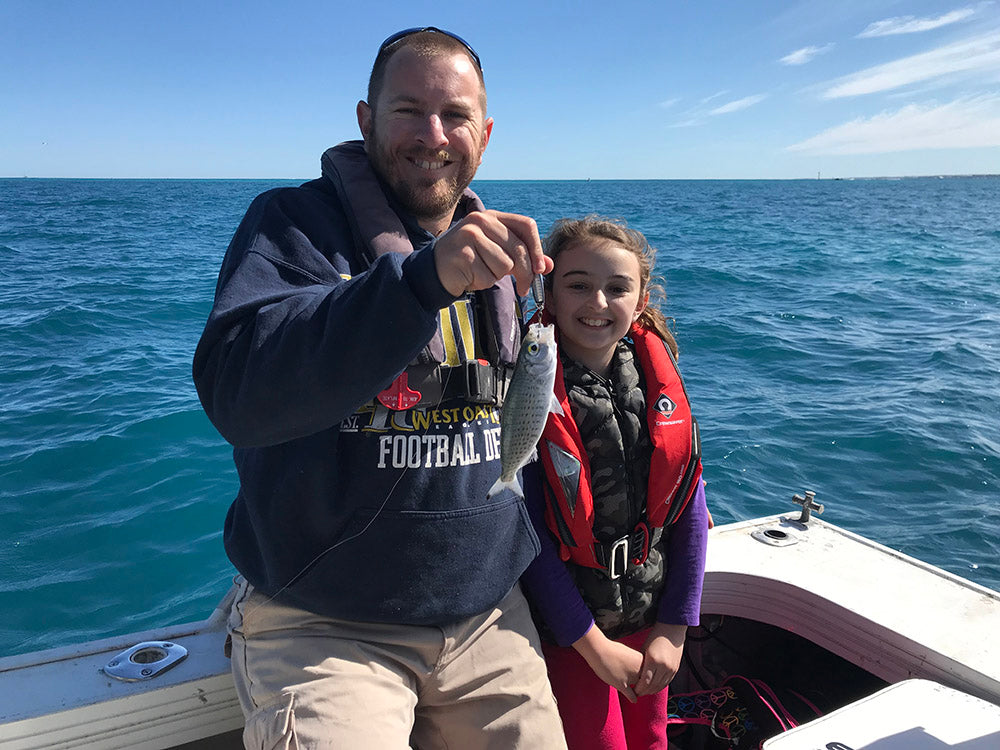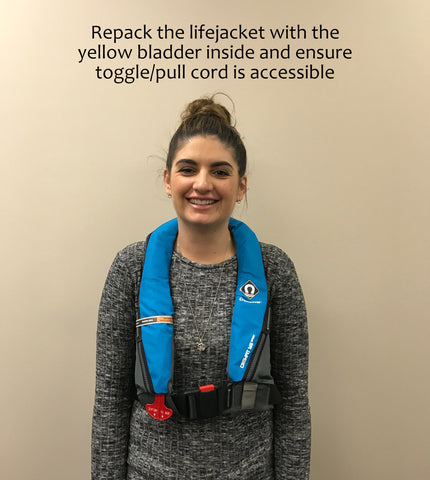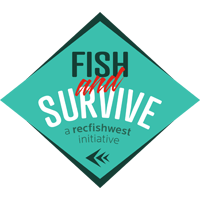FAQs
Where can I get a Crewsaver lifejacket from?
If you want a Crewsaver lifejacket, visit any of the outlets below:
- BCF, all stores;
- Boating Hardware, O'Connor;
- Dinghy World, Como;
- Hillarys Boat and Tackle Shop, Hillarys;
- Whitworths Leederville Supermmarket, West Leederville;
- Wilson Marine, South Fremantle;
- Yacht Grot, Fremantle.
Are the Crewsaver lifejackets certified to Australian Standard?
Yes, the Australian Standard AS4758 was introduced into recreational boat legislation on 1 July 2010 stipulating that a Personal Flotation Device with a buoyancy level of 150 and above is suitable for offshore use.
The Department of Transport marine boating safety requirements stipulate I must carry an approved Type 1 lifejacket for each person on board in unprotected waters, are your lifejackets Type 1?
Yes, Type 1 lifejackets are rated with a buoyancy level of 100 or more meaning it provides 100 Newtons (N) of buoyancy. Crewsaver lifejackets go beyond this, offering a buoyancy rating of 165N or 180N depending on which one you choose.
Should I buy a user-activated or water-activated lifejacket?
The choice is entirely up to you however we generally we recommend people that fish alone, are poor swimmers or choose to fish at night choose the water-activated lifejacket for peace of mind when on the water. Especially if you go overboard or fall from the stones and get knocked unconscious, all our lifejackets will turn you face up in the water should this occur and keep you floating until help arrives.

Which lifejacket will help me if I am unconscious?
All of our lifejackets (except the yellow kids ones) will turn an unconscious person into a safe position and requires no subsequent action by the user to maintain this position.
How do the lifejackets actually work?
The water-activated lifejacket will inflate when submerged in water (so they won’t accidentally go off if they’re splashed or wet from the rain), these jackets are well suited for solo fishers and non-confident swimmers (boating or landbased). Knowing these will inflate upon impact with the water and your children won’t need to think to pull the toggle will put your mind at ease.
The user-activated lifejackets allows the user to decide when to activate the jacket by pulling on the toggle which pierces the CO2 canister and inflates the highly visible yellow bladder. Designed to self-right the user face up so their head is above the water, when either unconscious or conscious, extra comfort is added knowing that if something went wrong, the user will always float upright.
Adjustable for any size range up to 200kg, these Type 1 lifejackets have a superior buoyancy level of 165N (most type 1 lifejackets have a buoyancy level of 100 – 150) and are suitable for open water and all land based fishing activities.

What is the lifting becket on the lifejacket?
The lifting becket is located below the left love of the inflation chamber and is used to lift and haul casualties from the water.
What does 165N and 180N mean?
This refers to the level of buoyancy. To comply with the law when boating, you must have a minimum standard of 100N buoyancy level lifejacket for every person on board. (Generally these are the yellow foam block jackets).

Are the Crewsaver lifejackets easy to use?
It’s understandable that people are unsure about something new in the marketplace, especially when the product is designed to save lives. The truth is that new generation jackets are simple and user-friendly and there are only a few key features to know about when deciding to purchase one:
- The Crewfit 165N comes with a choice of two methods of activation, either user-activated, or water-activated:
– User-activated jackets activate when the user pulls on a toggle which pierces the CO2 canister and inflates the bladder.
– Water-activated models contain a moisture sensor which, when immersed in water, automatically pierce the canister without the user doing anything. This method of activation comes into its own of the user is incapacitated. These models also come with a manual override toggle. - All self-inflating life jackets carry a small canister of Carbon Dioxide (CO2) which is released into a bladder upon activation. This inflated bladder provides the buoyancy as the foam once did in the ‘block’ type jackets. Air can be added or removed manually through a mouthpiece (for extra inflation if need be). The canisters will need to be visually inspected every year and its recommended to replace the canister every 2-3 years or when corroded, pierced or damaged. If not, its time to replace your canister, which is easy to do.


What are the servicing requirements?
Jackets should be externally and internally visually inspected periodically for corrosion and damage. If the lifejacket has signs of damage do not use.
Follow along to the video below and learn how to periodically visually check your lifejacket at home (externally and internally), alternatively follow our step by step guide below. This guide is suitable for both water activated and user activated lifejackets.
Step by step guide:
- Firstly check the outer fabric of the lifejacket for cuts, tears, abrasion and signs of damage.
- Then unzip the jacket so the yellow bladder is visible.
- Unscrew the canister (don’t worry it won’t go off – and if it does by any chance its only CO2 which is what you breathe out of your mouth).
- Check the canister for corrosion and puncture. Also check the section where it screws into the release trigger and the green clip/tab is still in place (do not pull the cord or remove the green tab).
- Check there is no freying on the pull cord and the whistle is still in-tact.
- If your lifejacket is water inflating, check the black capsule's expiry date and take note when this must be replaced next. A good place to store these details is in the Recfishwest app under my tools > my safety gear. Check the base of the black bobbin without removing it, to ensure there is a green cap in place. Some jackets also have an indicator window displaying green if the black capsule is intact. If the indicator or green capsule is displaying red then the bobbin could have been fired or damaged and must not be used. It will need to be replaced.

- Manually inflate the jacket through the mouth tube until fully inflated - leave inflated overnight.
- If inflated the following day, your lifejacket has no holes (which is a good start). A lifejacket that is leaking will not hold its firmness and must be replaced.

- Screw the canister back into place tightly
- Deflate the jacket via the end of the mouthpiece – push in end to release air
- Repack the lifejacket as per instructions on the lifejacket; with the yellow bladder inside (don’t worry if it’s not packed as per manufacture).
-
Ensure manual toggle/pull cord is accessible

TIP: All Crewsaver lifejackets come with a user manual. It is highly recommended to familiarise yourself with its contents and keep it somewhere accessible for it to be referenced when needed. Contents include handy top tips, how-to guides and instructions into how to keep your lifejacket action ready.
The indicator window is displaying red, the bobbin has expired or my jacket has been inflated, how do I replace the canister and bobbin?
If the lifejacket has been inflated, the canister has been pierced or damaged, the firing mechanism is expired or the indicator window is showing red, you'll need to rearm your lifejacket.
Instructions for manual lifejackets:
It's easy! Simply remove the old canister, and replace it with a new canister. Ensure it is securely tightened.

Instructions for automatic lifejackets:
Follow the video steps below.
Repacking a lifejacket
Learn how to repack your lifejacket after servicing in this video:
Can Recfishwest or Fish and Survive service it?
Unfortunately we are not certified to service your lifejacket. However it can be done yourself or by a Survitec Qualified Technician. In WA the drop off point is Survitec, 24 Hines Road, O’Connor WA 6163. We suggest calling or emailing them first wa@survitecgroup.com
Alternatively follow our easy step by step guide above or the Department of Transport provides some good advice around inspecting and servicing your jacket here.

Where can I buy the replacement canisters from?
Click here to find out where you can get replacement canisters from.
Cleaning and storing your lifejacket:
Store in a dry, well ventilated space. If the lifejacket is wet or damp, and it is fitted with an automatic firing capsule, it is advisable to remove the capsule until the lifejacket is completely dry. Any dampness in the jacket may penetrate the capsule and eventually cause it to operate the lifejacket.
Periodically rinse the lifejacket in freshwater, particularly if it has been in contact with salt water. Oil and similar marks should be removed by washing with warm soapy water.
After washing always allow your lifejacket to dry naturally before stowing in a dry place.

Don’t I still need the ‘foam block’ jackets on board to comply with regulations?
No!
Are ‘foam block’ jackets as safe as the new style jackets?
Whilst it’s true that ‘foam block’ jackets provide enough buoyancy to meet the minimum standards for lifejackets on board a vessel in WA, it’s also true that they are not the ‘safest’ option. Wearing a self-inflating jacket whilst boating is significantly safer than attempting to access a stowed jacket in an emergency situation.
People make decisions around safety when purchasing many products throughout their lives. You might purchase steel capped boots over standard boots because they provide better protection, or you might purchase a car with a 5 star safety rating over one with a 3 star rating. Decisions like these are made with our health and well-being in mind and lifejackets are no different. The safest option is to buy a self-inflating jacket and wear it!
Boating accidents can and do happen. You never know when something may go wrong or if help will be around, but when your lifeline is strapped to your chest the whole time you give yourself the best possible chance of coming out unscathed.
Make the choice, switch to a New Generation Life Jacket and return home safe.
What is your refund policy?
If you’re looking to return or exchange your order, we're here to help. We offer free returns or exchanges within 30 days of receiving your order. You can return your product for store credit, a different product, or a refund to the original payment method.
Please note the following exceptions to our return and exchange policy:
- Discounted items are final and cannot be returned or exchanged
- You cannot return an item due to a change of mind
- Items affected by shipping carriers, delayed delivery time and the COVID-19 crisis cannot be returned, as this is completely out of our control (Please keep this in mind when placing an order).
- Returned items must have tags still on and be returned in original packaging
- Returned items must have no visible signs of wear or use
To initiate a return or exchange, please complete the following steps:
- Login to our online return portal using your email address and order ID
- Choose the products you wish to return or exchange from your order
- Print your prepaid shipping label that you will receive by email
- Send all items back to us using the label provided
Alternatively, call us on (08) 9246 3366 or email info@recfishwest.org.au and we can assist with the returns procedure.
Still need help?
Send us an email at info@recfishwest.org.au or call 9246 3366.

